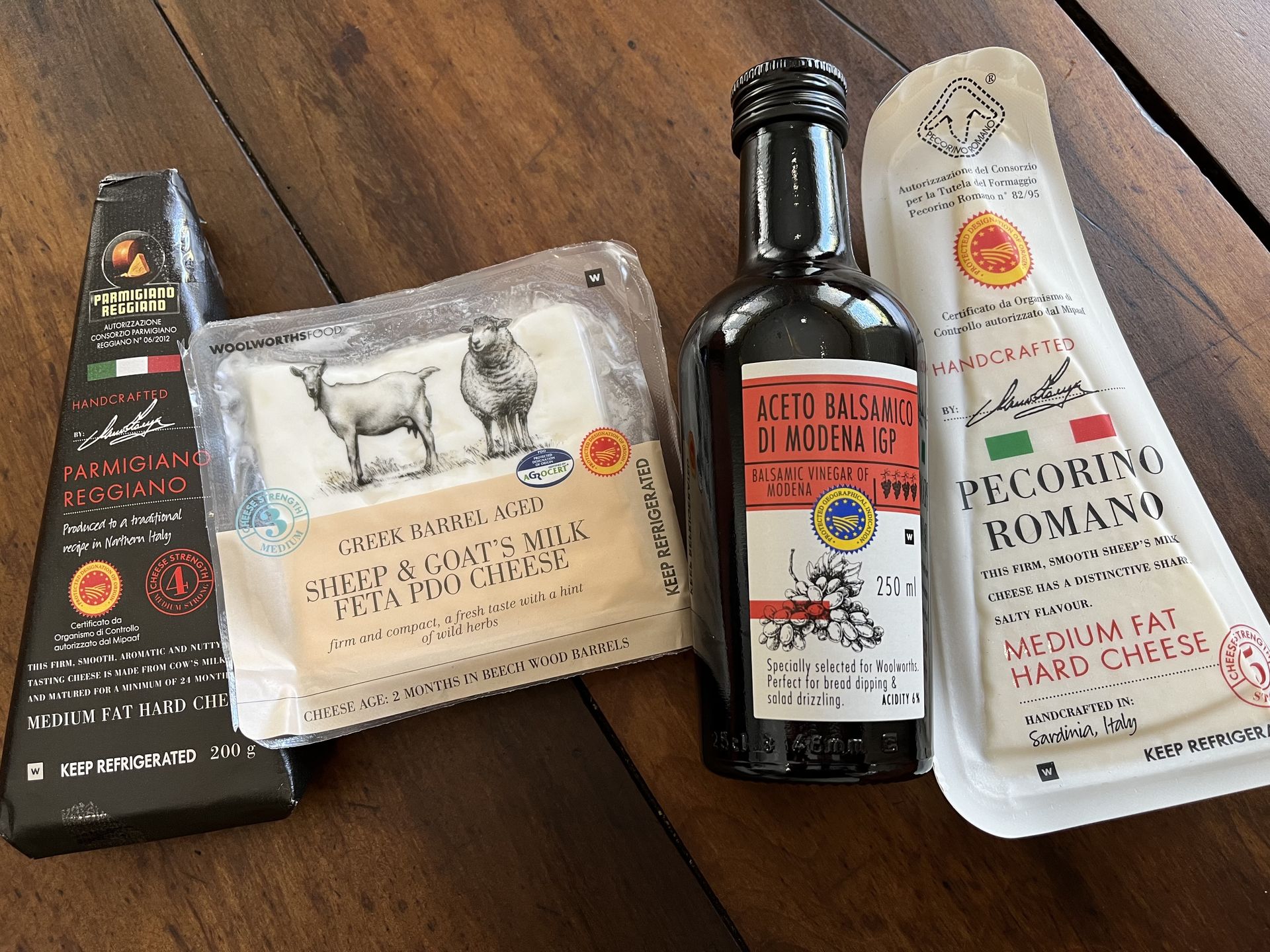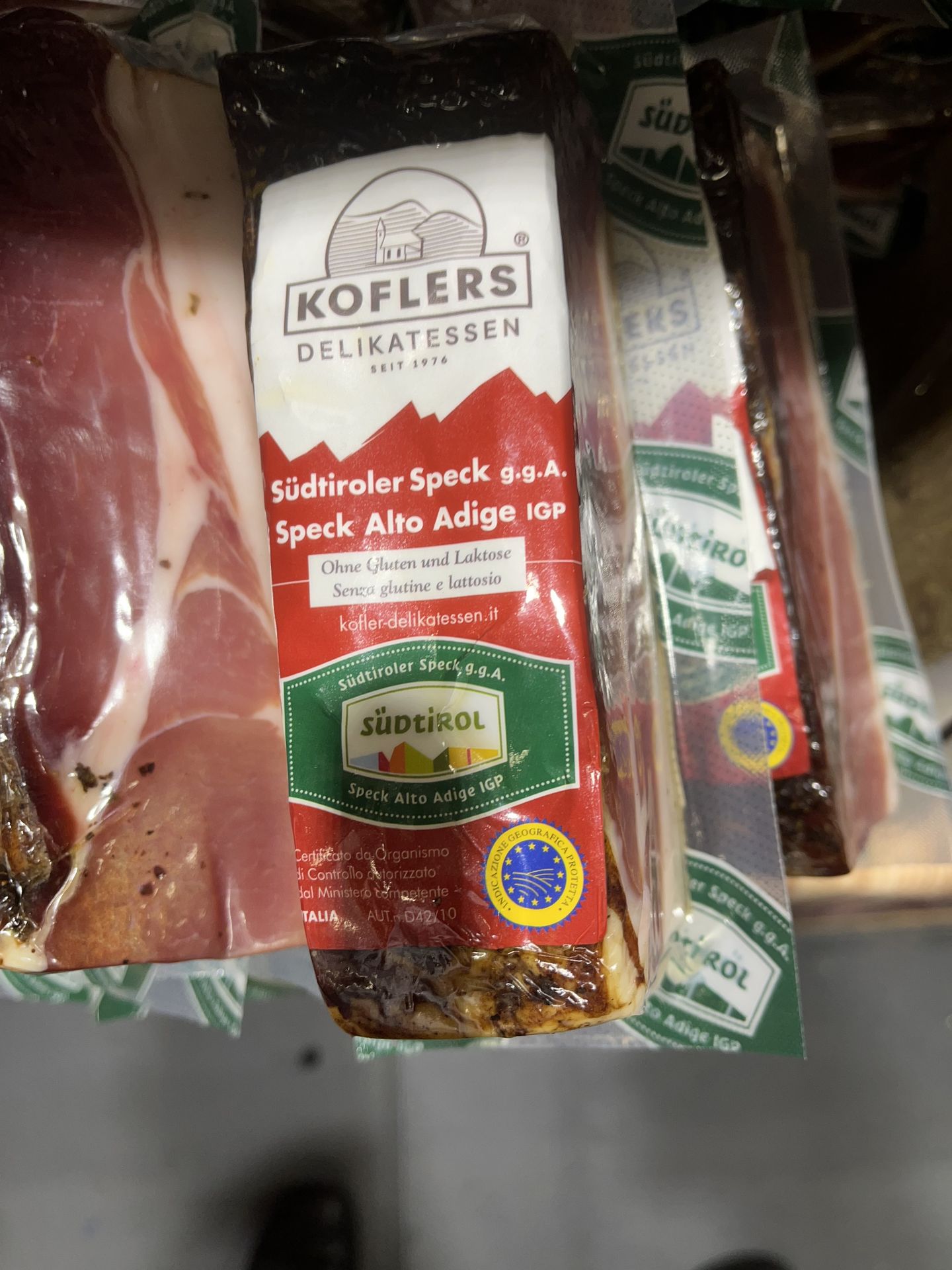A meal or food shopping experience gains significance when you hear the story about how, and where the food was produced and how the region, and culture, shaped the identity of the product. In our minds these backstories enhance, and nuance, the shopping or tasting experiences. Think about drinking an ice-cold glass of ‘real’ Champagne or the satisfaction of serving your dinner guests ‘Parma Ham’ or ‘Parmigiano Reggiano’ cheese or ‘Jamon Iberico’. Food stories are always a conversation starter, and knowing the backstory, or the story about what makes the food ‘unique’ does improve the tasting experience!
Let’s start with the (back)story of Mont Saint-Michel lamb, also known as Agneau de Pré-salé du Mont-Saint-Michel (Salt Meadow Lamb). The story of Mont Saint-Michel lamb begins with the vast salt marshes that surround the iconic Mont Saint-Michel abbey, a UNESCO World Heritage Site in Normandy, France. These marshes are flooded twice daily by the tides of the English Channel. The sheep that roams these salt meadows feed on a variety of grasses and herbs that impart a distinctive flavour to their meat. The high saline content of the vegetation, combined with the coastal climate, results in lamb that is tender, succulent, and imbued with the essence of the sea. For centuries the farmers move their livestock between different grazing areas seasonally, and during spring and summer the sheep are brought to the salt marshes to graze on the lush vegetation. In 1986, Mont Saint-Michel lamb was granted official recognition as a Protected Geographical Indication (PGI) under European Union law. This designation acknowledges the unique characteristics of the lamb produced in the bay area and provides legal protection against imitation or misuse of the name. The PGI status ensures that Mont Saint-Michel lamb can only be produced within the designated geographical area and according to specific production criteria outlined in the official regulations.
Similar backstories are linked to products such as Gruyere Cheese, Parmigiano Reggiano cheese, Roquefort Cheese, Jamon Iberico, Prosciutto di Parma (Parma Ham), Camembert de Normandie, Brie de Meaux, Pecorino Romano, Gorgonzola, Mozzarella di Bufala Campana, Aceto Balsamico di Modena and many more (see picture of examples in SA retail stores). All these European products are embedded in traditions linked to specific regions and links back to decrees made centuries ago.

Trading these authentic products outside the region of origin and beyond national borders bring into play many problems in terms of traceability, labelling and misleading of consumers in retail markets and in the catering and hospitality industries. Protecting the reputation and authenticity of these products need to be done with great care and precision to avoid the destruction of the reputational value of the product.

The Word Trade Organisation’s 1994 agreement on intellectual property (TRIPS) contains a section on Geographical Indication which enhances their protection and extends it to more countries than previous international agreements. The TRIPS Agreement requires all Members of the WTO to provide the “legal means” to provide these minimum standards of GI protection in their territories.
With the global recognition of the principle of Geographical indications, most countries, realised that they also have food products with unique (back) stories. Let’s list a few famous examples:
- Basmati rice (India and Pakistan)
- Phu Quoc (Vietnam)
- Darjeeling tea (India)
- Café de Colombia (Colombia)
- Poivre de Penja (Penja Pepper) (Cameroon)
South Africa has also joined the global GI family with the registration of Rooibos as a Geographical Indication in 2021 and more recently Karoo Lamb in 2023.
So, next time you serve Karoo Lamb to your dinner guests, you will be able to corroborate your geographical claims, since Karoo lamb now has its own Geographical Indication protection with its own unique story! So, this is what you tell your culinary friends, to assure them Karoo lamb GI can now be traced to its own ’salt marshes’, in this case the Karoo’s unique herbal shrubs and grasses. “It is only Karoo Lamb when it is a lamb which was born and raised on Karoo veld in the defined Karoo region. It has never been in a feedlot, and never grazed on planted pastures”. The checks and balances build on a rigorous traceability system, internal controls implemented by the regional collective organisation, the Karoo Lamb Consortium and integrity and honesty of all role payers – from the farmer to the retailer to the restaurateur.
The unique story of Karoo Lamb is embedded in the images of windmills, sheep, farm homesteads, endless vistas, home-baked bread, hospitable evenings. These images are engrained in the minds of many South Africans when they think of the Karoo. Because of these images, and the tranquillity and honesty of the Karoo way of life, the “Karoo” concept has become synonymous with quality, tradition, and wholesomeness. The reputation for quality which is embedded in words such as ‘Karoo’ has significant marketing potential and is as such already sought after by producers often with little or no link to the region.
The Karoo covers almost 50% of the total area of South Africa and is sparsely populated, far away from major urban and distribution centres. This lonely corner of the earth is home to one of South Africa's living treasures: flocks of sheep, grazing freely among the scattered shrubs. Their meat is spiced on the hoof and described as “mouth-wateringly succulent, imbued with the subtle, fragrant flavours of the Karoo bush”. It's not surprising - they feed on wild herbs, thousands of different species of them, where normally sheep live on one type of grass. It's a most exquisite lamb, and it is the world-renowned free-range Karoo lamb.
While there is a unique back story and because there is intrinsic reputational value and brand value in the name “Karoo Lam”, there are many opportunities for opportunistic behaviour, dishonesty, shirking and plain food fraud. These include:
- The farmers who market the lamb as Karoo Lamb from a feed lot or let the animals graze on planted pastures.
- The abattoir that source from farms outside the region and label them as Karoo lamb.
- The butcher that source lamb without confirming the origin and then claiming it is from the Karoo and selling to customers.
- The restaurateur that tells the naive tourist that the lamb on the plate is from the Karoo. It is portrayed like that on the menu, but it is sourced from a feedlot in Riebeeck-Kasteel.
Fortunately, science has evolved to be able to (just as we can taste the difference) detect the origin of lamb through analysis of the volatile fingerprints of lamb meat and fat. Dr Sara Erasmus and co-authors showed in a 2017 paper that it is possible through the application of proton-transfer mass spectrometry (PTR-MS) to authenticate the origin of the lamb. Their results showed clearly that the volatile composition of the fat from Karoo Lamb had a higher concentration of key terpenes, validating the direct link with the herbaceous plant samples. Overall, the analysis shows considerable differences between the Karoo and Non-Karoo samples indicating the typicality of Karoo lamb.
This research was followed-up by an extensive exercise to develop a database of volatile fingerprints for more regions and sub regions in the Karoo. With this in hand scientists can now very easily analyse samples from retail shelves and confirm the authenticity of the Karoo origin claims on their labels. These techniques have been successfully applied to protect the authenticity of Welsh Lamb and New Zealand lamb.
In summary the story of GIs, such as Karoo Lamb, is one of preserving and celebrating the unique qualities and traditions associated with regional food and drink specialities, while also providing economic opportunities for producers and promoting consumer trust and transparency in the marketplace. Food with a backstory can significantly enhance its appeal and value for several reasons:
- It has a cultural connection.
- It serves as powerful expression of identity.
- It provides transparency about sourcing practices and production methods.
- It evokes emotions, memories, and sensory experiences.
- It stands out from the competition and commands higher value among consumers.
Food with a backstory enriches the dining experience by deepening our understanding of culture, identity, sustainability, and human connection. By sharing stories about the origins and traditions behind food, we celebrate diversity, foster appreciation for culinary heritage, and create meaningful connections that transcend borders and cultures.
Karoo Lamb provides this unique experience for South Africans and should be embraced by our retailers, restaurateurs and our culinary hero’s and should be jealously guarded against misappropriation.